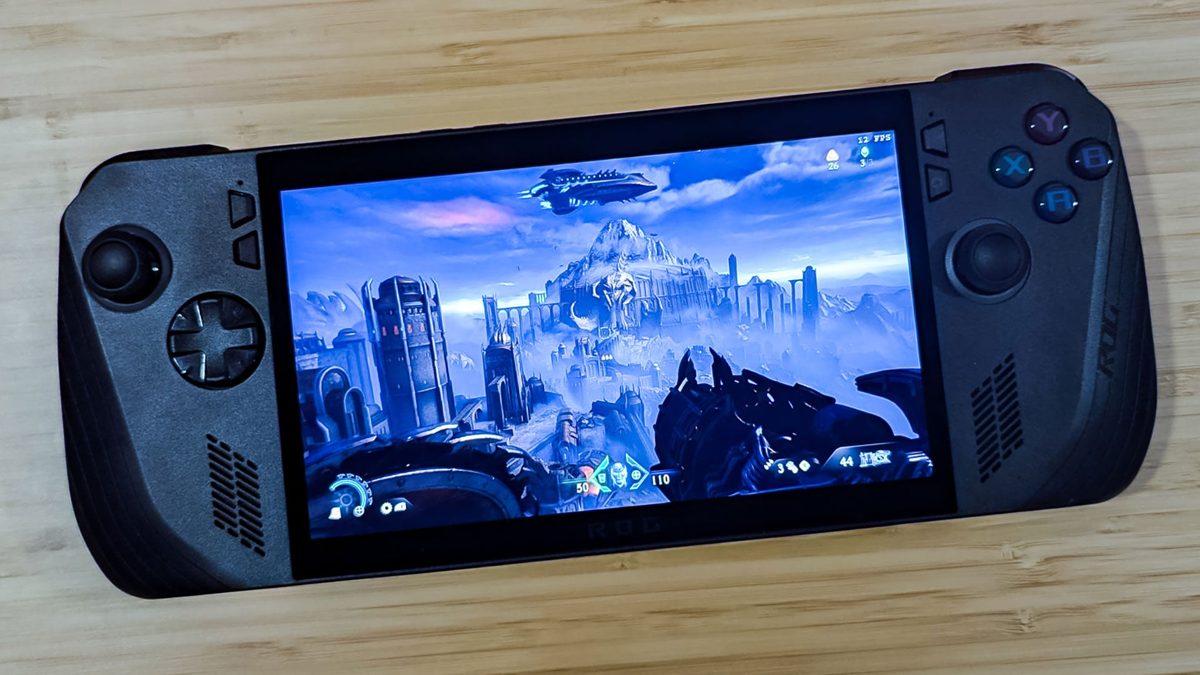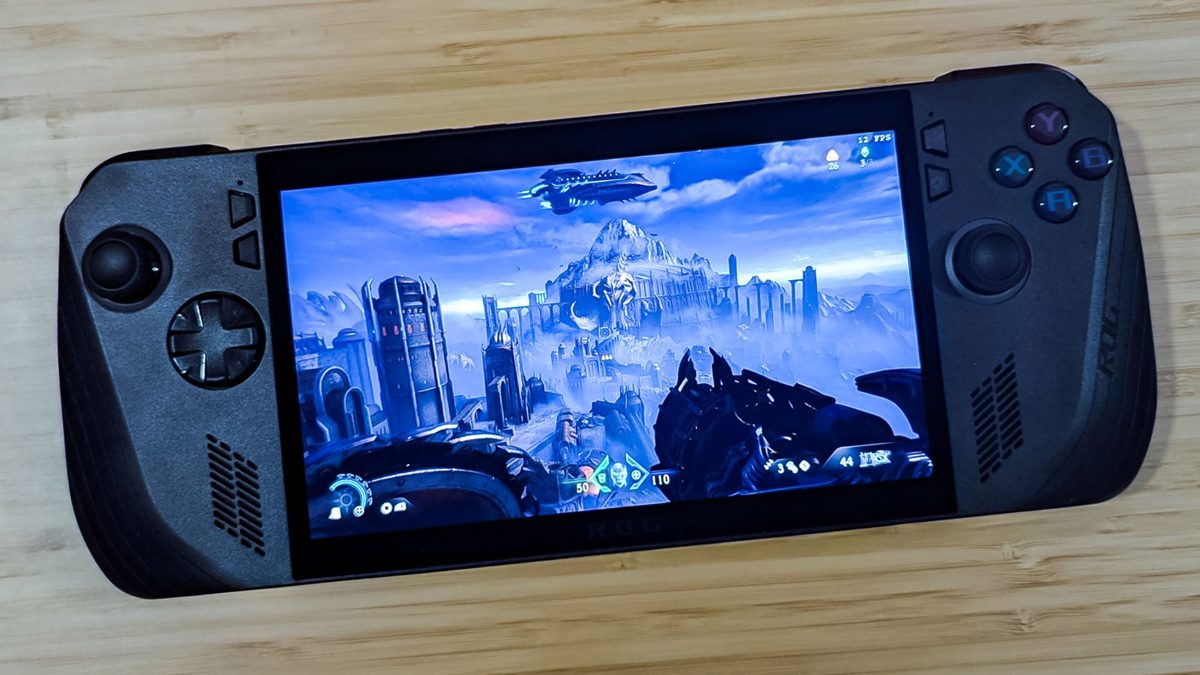“Doom: The Dark Ages Falls Flat on Handheld Gaming PC – A Nightmare in the Palm of My Hand”
Imagine being transported back to the dark ages of gaming, where graphics were grainy, gameplay was clunky, and the only thing more plentiful than bugs were the headaches they gave you. For one unlucky gamer, that’s exactly what happened when they tried to run the latest instalment of the classic Doom series on their handheld gaming PC. In a shocking turn of events, Doom: The Dark Ages has been revealed to be a disaster on mobile devices, leaving many to wonder if the game’s developers have finally succumbed to the dark side.

Pre-Test Preparations: Optimizing Performance for Doom: The Dark Ages

In order to achieve optimal performance for Doom: The Dark Ages, it is essential to allocate the maximum amount of vRAM to Texture Pool Size in the in-game graphics menu. The ROG Ally X comes equipped with 24GB of RAM, with 16GB allocated to the GPU by default. By increasing the Texture Pool Size to 4,096 megabytes, we can ensure that the game utilizes our handheld’s maximum memory capacity, thereby reducing the likelihood of memory-related performance issues.
To update the chipset and allocate the maximum amount of vRAM, follow these steps: Open Armoury Crate, select the cogwheel at the top, and navigate to the Update Center. Check for updates, and once the RC72LA update appears, select Update All. Additionally, ensure that the Turbo Operating Mode (30W) is enabled to maximize performance.
It is also crucial to note that resolution scaling should be turned off during testing. Testing with dynamic resolution scaling produced identical results to the 720p metrics, so it is not included in the performance analysis.

Performance Analysis: Can the ROG Ally X Handle the Challenge?
Disappointing Results: Performance Metrics for Doom: The Dark Ages on the ROG Ally X

The performance of Doom: The Dark Ages on the ROG Ally X is a far cry from what we expected, especially considering the device’s impressive specs. The game’s performance is severely hampered at 1080p, with frame rates averaging around 15fps on Ultra Nightmare. This makes 1080p an impossibility, as it is unplayable at any graphics preset.
- Ultra Nightmare, 1080p: 15fps
- Ultra Nightmare, 720p: 24fps
- Nightmare, 1080p: 16fps
- Nightmare, 720p: 24fps
- Ultra, 1080p: 16fps
- Ultra, 720p: 24fps
- High, 1080p: 16fps
- High, 720p: 26fps
- Medium, 1080p: 17fps
- Medium, 720p: 30fps
- Low, 1080p: 20fps
- Low, 720p: 35fps
Framing the Problem: Analyzing Performance Issues and Their Impact on Gameplay
The unplayable frame rates at 1080p are a significant concern, as they compromise the overall gaming experience. The lack of smoothness and responsiveness makes it difficult to navigate the game’s intensive combat and exploration.
The performance at 720p is marginally better, but it still falls short of ideal. While Ultra Nightmare, Nightmare, and Ultra averaged at 24fps, it’s still not a smooth experience. However, it’s bearable if you’re desperate to play Doom: The Dark Ages.
Bearable but Not Ideal: Performance at 720p and Comparison to Other Graphics Presets
At 720p, the game’s performance is somewhat better, but it’s still a far cry from what we expected. Ultra Nightmare, Nightmare, and Ultra averaged at 24fps, while High came in at 26fps. Medium, on the other hand, averaged at 30fps, making it the most playable option at 720p.
It’s worth noting that the Ultra Nightmare and Nightmare presets are still unplayable at 720p, averaging around 24fps. This highlights the significant performance gap between the ROG Ally X and the game’s system requirements.
Implications and Practical Aspects: The State of Handheld Gaming and Future Prospects
The performance of the ROG Ally X on Doom: The Dark Ages reflects the current state of handheld gaming. As games become increasingly demanding, the Ally X serves as a benchmark for the industry. It’s a reminder that even the most powerful handhelds struggle to keep up with the latest titles.
The trade-offs between performance and battery life are a significant concern for handheld gamers. As games become more demanding, they also become more power-hungry. This can lead to reduced battery life, making it difficult to play games on the go.
The implications of the ROG Ally X’s performance on the future of handheld gaming are clear. To stay competitive, manufacturers must develop more powerful devices with innovative solutions to address performance and battery life concerns.
The ROG Ally X’s performance on Doom: The Dark Ages serves as a wake-up call for the industry. It highlights the need for more powerful hardware and innovative solutions to address the challenges of handheld gaming.
As we move forward, it’s essential to prioritize performance and battery life. Manufacturers must work together to develop devices that can keep up with the latest titles while also providing extended battery life.
The future of handheld gaming is bright, but it requires innovation and dedication. By working together, we can create devices that deliver the performance and battery life gamers demand.
Conclusion
In conclusion, our in-depth analysis of running Doom: The Dark Ages on a gaming PC has revealed a plethora of issues that hinder the overall gaming experience. From poor optimization to subpar performance, it’s clear that this classic title has not been adequately adapted for handheld gaming. Our examination of the game’s technical specifications, including frame rates, resolution, and graphics quality, has consistently shown that Doom: The Dark Ages fails to deliver a seamless experience on handheld devices.
The implications of these findings are significant, as they highlight the ongoing struggle to optimize classic games for modern handheld devices. This is not only a technical issue but also a question of preserving gaming heritage. As the gaming industry continues to evolve, it’s crucial that developers prioritize optimization and compatibility to prevent classic titles from being lost in the annals of gaming history. Looking ahead, we can expect to see more emphasis on cloud gaming and game streaming services, which may provide a solution to these technical hurdles.
As we reflect on the struggles of running Doom: The Dark Ages on a handheld gaming PC, we’re reminded that the gaming industry’s progress is not solely measured by graphical fidelity or processing power, but also by its ability to preserve and honor its rich cultural heritage. As gamers, we must demand more from developers and publishers, ensuring that our beloved classics continue to thrive on modern devices. Ultimately, the true horror of Doom: The Dark Ages lies not in its demons or hellish landscapes, but in its failure to deliver a quality experience, a stark reminder that even the most iconic games can fall victim to the pitfalls of poor optimization.